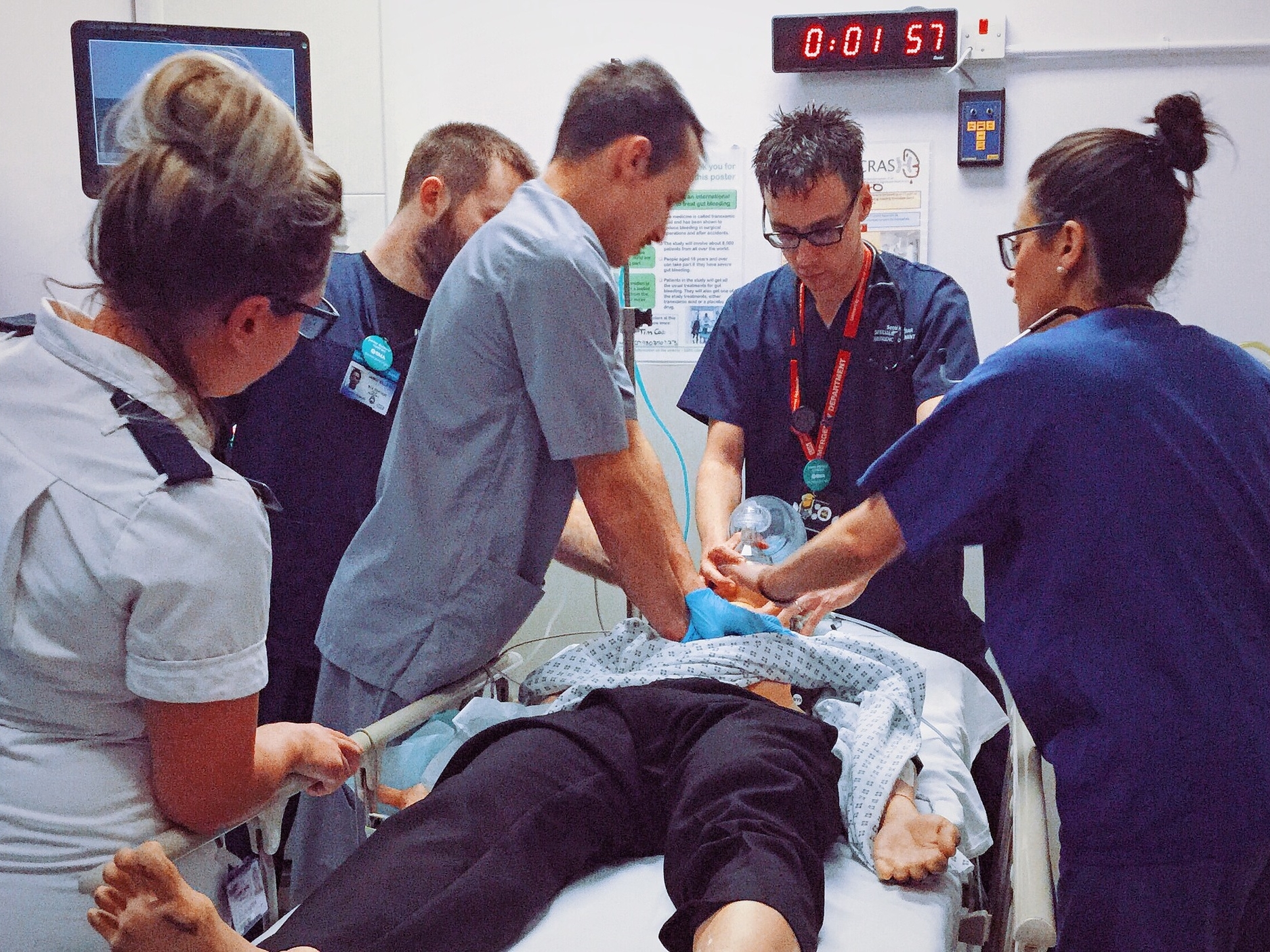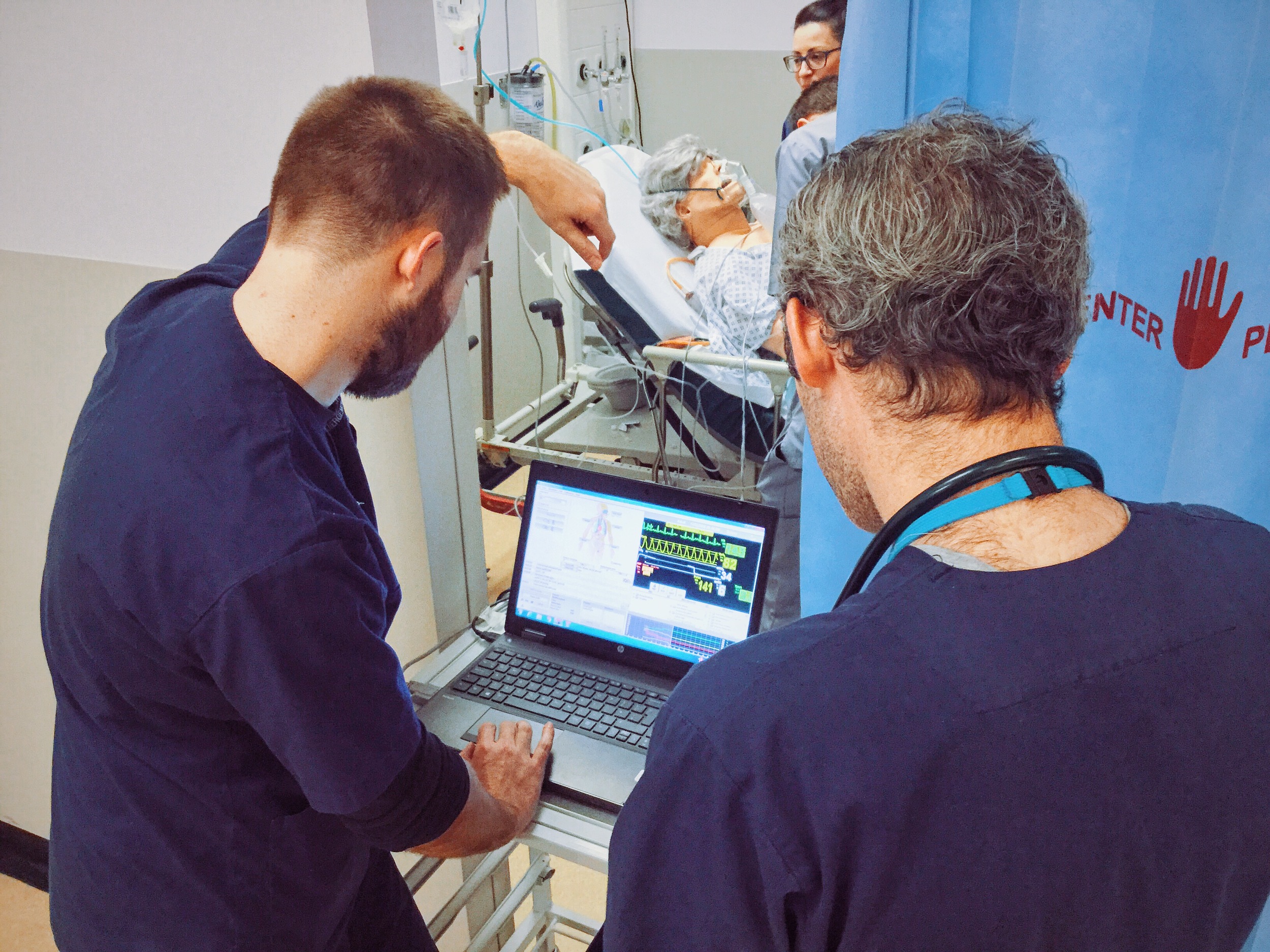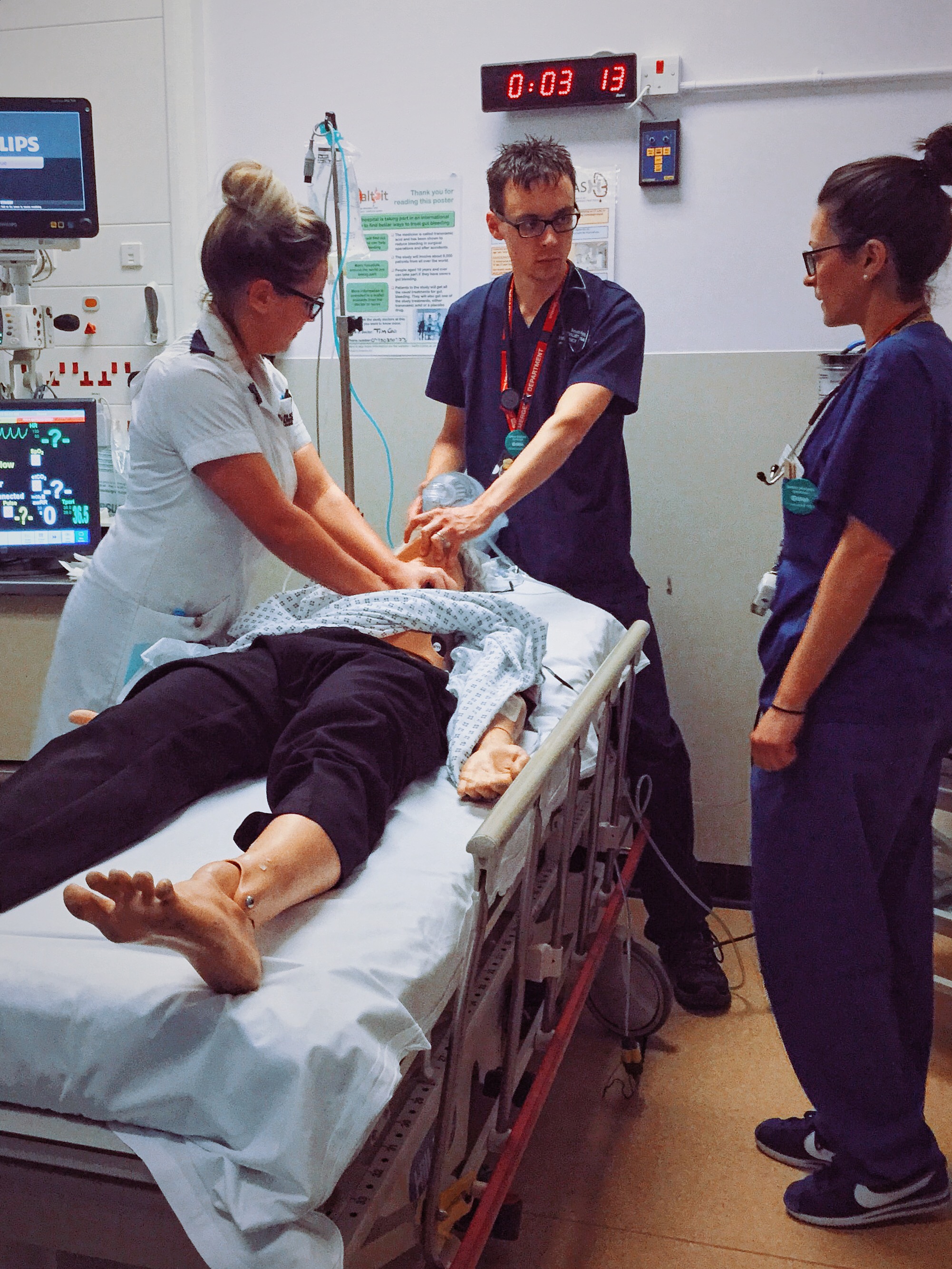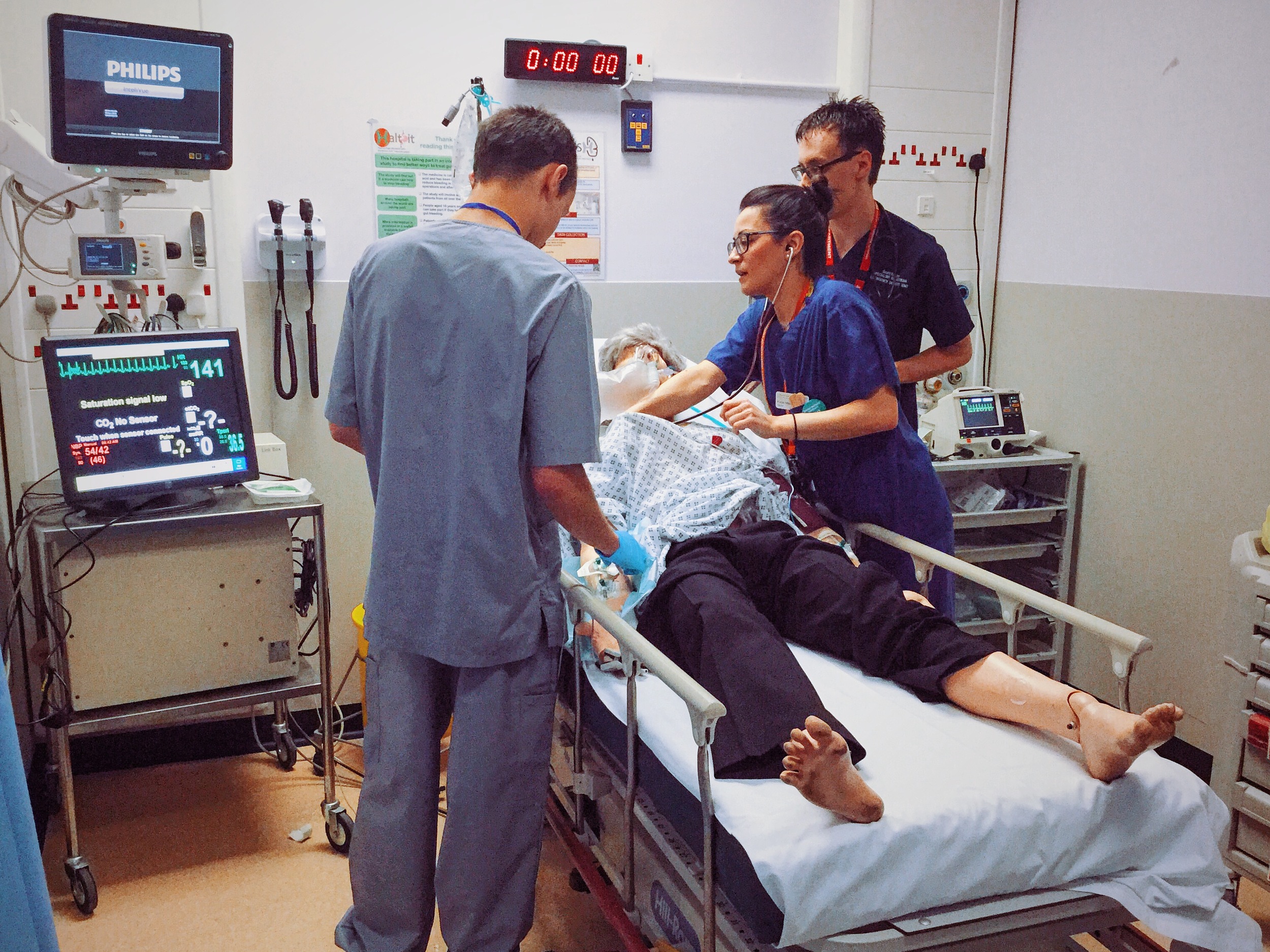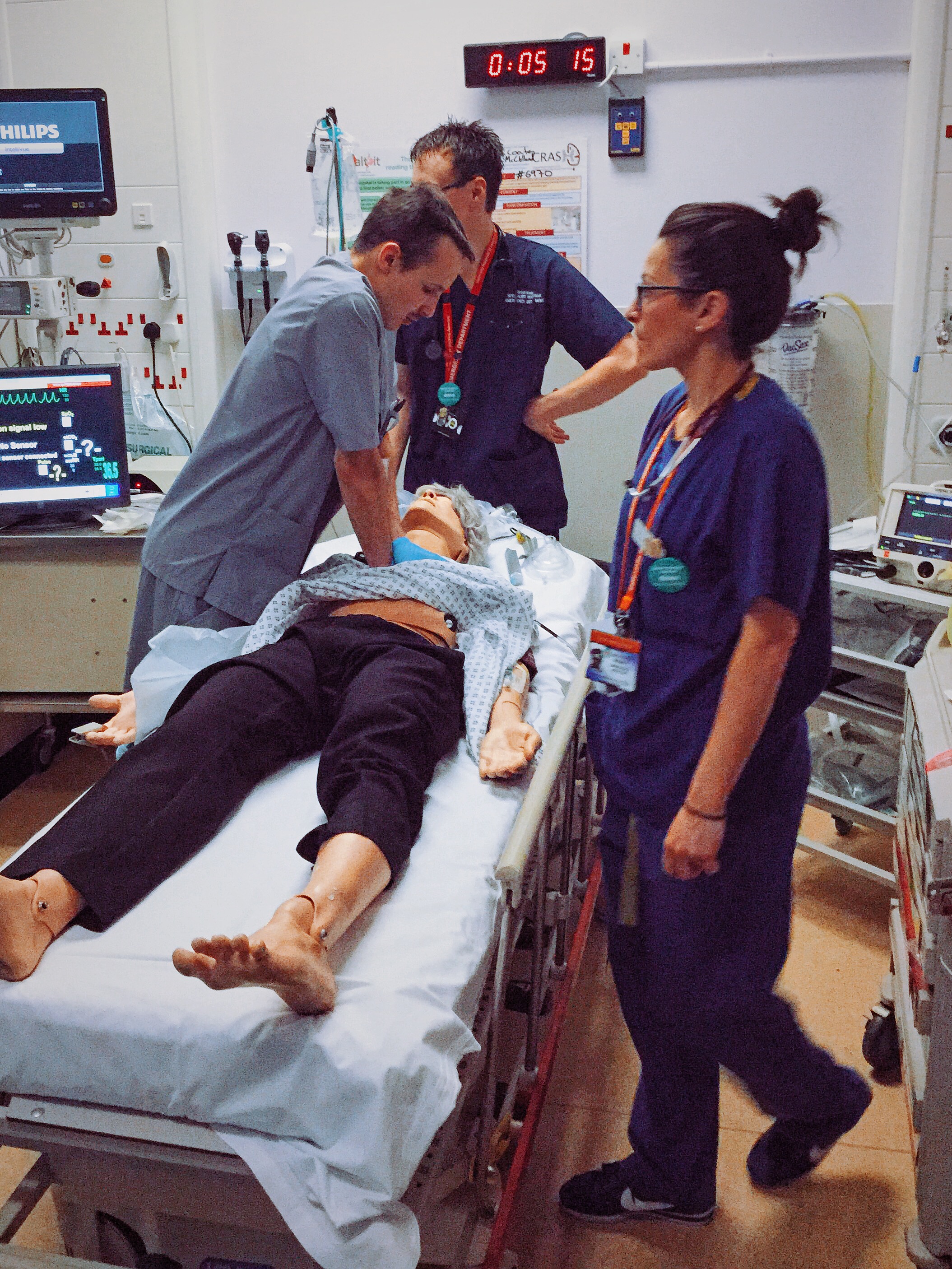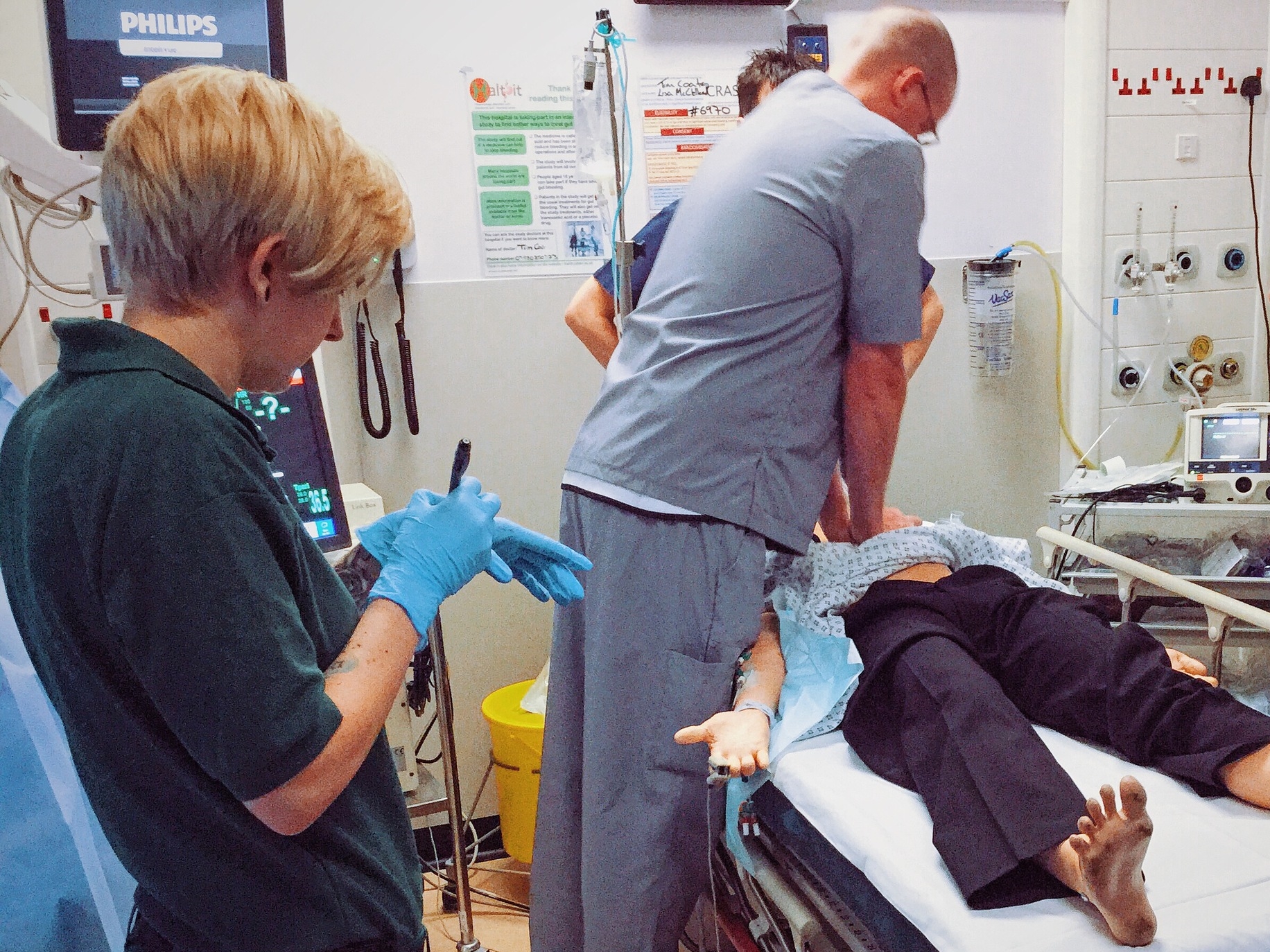#SimBlog: Ruptured AAA
““72-year-old female collapsed at home – now hypotensive and less responsive.””
Observations
A – Patent
B – Bilat Air Ent, Sats 95% (21%)
C – HR 111, BP 89/56
D – GCS E3 V3 M5
E – Temp: 36.5°C
Clinical Findings
Generalised Tender Abdomen
Palpable pulsatile mass in abdomen
Cool Peripheries
Why We Simulated?
Rupture of an Abdominal Aortic Aneurysm remains a catastrophic diagnosis: "For patients who suffer rupture of an AAA before hospital arrival more than 50% do not survive to reach the emergency department; for those who do, the survival rate drops by about 1% per minute." [1]
Presentations to the ED may be vague rather than the classical back pain. Those at risk (particularly >65 yrs with atherosclerotic disease) presenting with back pain, collapse or indeed hypotension should have AAA considered and imaging considered.
This scenario also demonstrated a "no-win" scenario, as the patient's condition was never going to improve depsite aggressive management. Cases such as this can be very challenging for the team as stopping resuscitation can be a difficult decision. It is important that team members understand why it is appropriate to stop. This should also be communicated to family if they are present during the resucitation.
References:
- Medscape: AAA
Further Reading:
- Roger Harris: When to Stop Resucitation
- Cliff Reid: When Should Resucitation Stop?
Learning Outcomes
The Massive Transfusion Protocol can be life saving in bleeding patients.
The Rapid Infuser can deliver a large vol of blood/fluid quickly.
Stopping resuscitation can be VERY hard – but once reversible causes have been addressed it should be considered.
Positive Feedback
Good Communication from Team Leader and Sharing of Mental Model.
Team remained calm despite escalating level of challenge in the scenario.
Decision to stop included the whole team.



